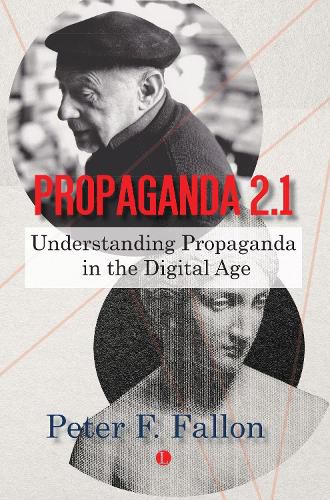Readings Newsletter
Become a Readings Member to make your shopping experience even easier.
Sign in or sign up for free!
You’re not far away from qualifying for FREE standard shipping within Australia
You’ve qualified for FREE standard shipping within Australia
The cart is loading…






As the Internet Age endures and expands, Peter K. Fallon peers into the Pandora's Box of our age. A twenty-first century update to Jacques Ellul's masterful sociological study Propaganda, Propaganda 2.1 explores how the 'digital revolution' has transformed the boundaries between individuals, institutions, and centres of power. Coupling historical analysis with a wealth of current examples, Fallon exposes the intricate and insidious ways propaganda alters our daily realities.
Propaganda 2.1 is divided into three sections: propaganda 1.0, 2.0, and 2.1. Propaganda 1.0 compares the popular conception of propaganda with persuasive techniques such as rhetoric and coercion; 2.0 reveals how the development of moveable-type printing built the foundations of modern propaganda; and, finally, 2.1 inhabits the 'post-truth' world in its totality. Whilst the media landscape continually shifts, Propaganda 2.1's analysis is an opportunity to tackle this new reality.
$9.00 standard shipping within Australia
FREE standard shipping within Australia for orders over $100.00
Express & International shipping calculated at checkout
As the Internet Age endures and expands, Peter K. Fallon peers into the Pandora's Box of our age. A twenty-first century update to Jacques Ellul's masterful sociological study Propaganda, Propaganda 2.1 explores how the 'digital revolution' has transformed the boundaries between individuals, institutions, and centres of power. Coupling historical analysis with a wealth of current examples, Fallon exposes the intricate and insidious ways propaganda alters our daily realities.
Propaganda 2.1 is divided into three sections: propaganda 1.0, 2.0, and 2.1. Propaganda 1.0 compares the popular conception of propaganda with persuasive techniques such as rhetoric and coercion; 2.0 reveals how the development of moveable-type printing built the foundations of modern propaganda; and, finally, 2.1 inhabits the 'post-truth' world in its totality. Whilst the media landscape continually shifts, Propaganda 2.1's analysis is an opportunity to tackle this new reality.